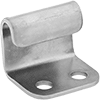Filter by
Diameter
Thread Size
Screw Size
Finish
Thickness
Weight Capacity
Drill Bit Size
Minimum Installation Depth
Mounting Location
Usable Length
Hook Opening Width
DFARS Specialty Metals
Export Control Classification Number (ECCN)
Inside Width
Fastening and Joining
Containers, Storage, and Furniture
Material Handling

































